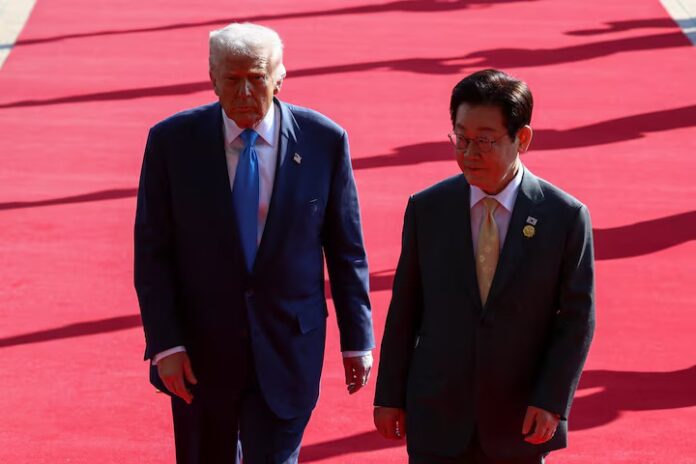By Michelle Ndaga
The United States and South Korea have unveiled a sweeping $350 billion trade and security agreement that merges industrial investment with deep defence cooperation. The announcement, revealed in a joint fact sheet, comes after a summit between U.S. President Donald Trump and South Korean President Lee Jae-myung in October.
Under the deal, South Korea will pump $150 billion into U.S. shipbuilding efforts, while an additional $200 billion will be targeted at strategic sectors including semiconductors, artificial intelligence, and nuclear energy.
To stabilise its currency, Seoul confirmed that cash investments will be disbursed in annual tranches not exceeding $20 billion.
The fact sheet also signals a major breakthrough in defence cooperation: the U.S. has given formal approval for South Korea to develop nuclear-powered submarines. Both countries will work together to source fuel, including enriched uranium, and may collaborate on spent-fuel reprocessing.
To coordinate industrial output, a joint shipbuilding working group will oversee the construction of both commercial and military vessels. Analysts note that reviving U.S. shipyards could be a significant win for industrial capacity, but warn that such large-scale capital deployment carries risks.
From a diplomatic standpoint, the pact deepens the U.S.–Korea alliance beyond trade. However, it raises sensitive geopolitical issues, especially around non-proliferation. China has already voiced concerns, while critics warn of added regulatory complications.
Despite the ambitious size of the investment, both sides emphasise that funds will be channelled into commercially viable projects only, and mechanisms are in place to address market instability if it arises.
As this landmark accord moves toward implementation, business and defence communities will closely follow how funds are deployed and whether strategic ambitions translate into concrete action.



















